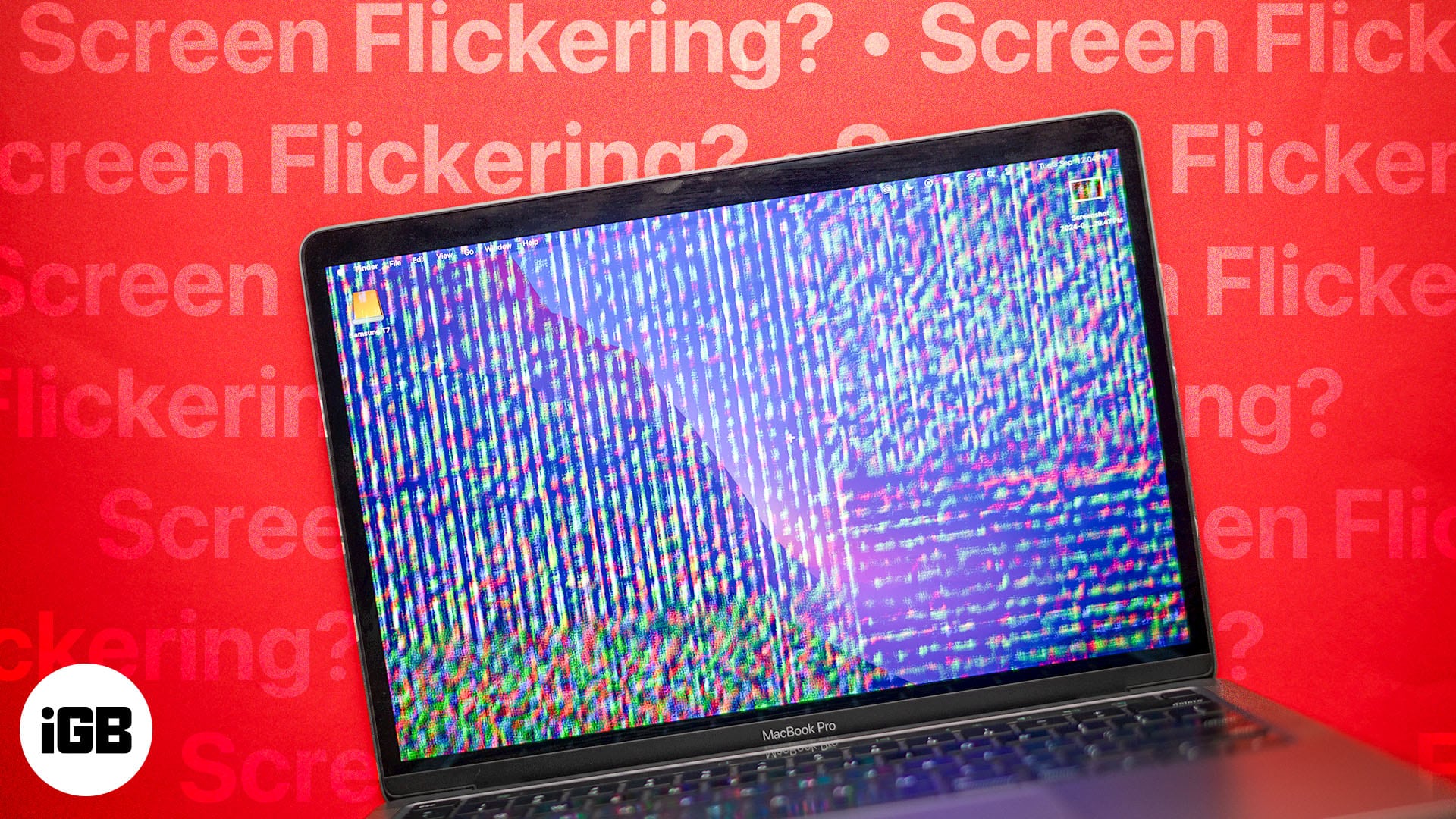
For as long as there have been flickering images on a silver screen, audiences have flocked to horror films, driven by a primal desire to feel fear. Whether it’s the jolt of a sudden jump scare, the lingering unease of a disturbing idea, or the visceral shock of blood-soaked violence, the genre offers a unique adrenaline rush. But for all its popularity, the question of which film truly stands as the ‘scariest’ has remained a hotly debated, and deeply subjective, topic.
Over the years, various polls and critical consensus have attempted to crown a champion of terror. Rotten Tomatoes, for instance, conducted a massive user poll in 2022, gathering votes from its vast community of horror aficionados to determine their most terrifying cinematic experiences. These fan-driven lists offer invaluable insight into what resonates with the collective psyche of moviegoers, showcasing classics and modern masterpieces alike.
Yet, a fascinating new dimension has been added to this perennial debate: ‘The Science of Scare’ study. Now in its fifth year, this groundbreaking research delves into the physiological reactions of audiences, tracking resting heart rates and spikes during startling moments to objectively measure fear. This data-driven approach promises to finally settle some arguments, revealing which films don’t just *feel* scary, but scientifically *are* scary. And the results, as we’ll explore, include some surprising — and utterly terrifying — contemporary entries, with one low-budget horror film, in particular, taking the crown for its unparalleled ability to induce terror.
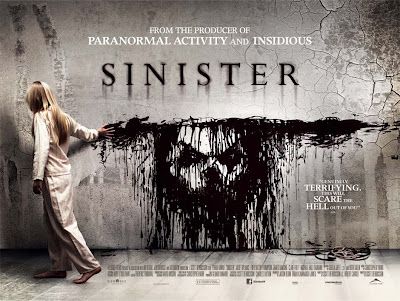
1. Sinister (2012)
When we talk about the absolute pinnacle of cinematic fear, backed by cold, hard data, Scott Derrickson’s 2012 film “Sinister” stands proudly at the top. This is the movie that “The Science of Scare” study crowned the scariest, achieving an astonishing overall score of 96 out of 100. It’s a harrowing depiction of deceit, lies, and supernatural endeavors that truly digs its claws into audiences, proving that psychological horror, when done right, can be profoundly effective.
The film’s terrifying power is not just anecdotal; it registered an average heart rate (AHR) of 86 bpm among study participants, with heart-stopping spikes that soared as high as 131 bpm. This isn’t merely about jump scares, though the film certainly has those. Its genius lies in its ability to build a pervasive sense of dread, drawing viewers into the escalating nightmare faced by its protagonist, true-crime writer Ellison Oswald.
Oswald, played by Ethan Hawke, moves his unsuspecting family into a home where a previous family was brutally murdered, all in the pursuit of his next big story. His discovery of a collection of chilling snuff films, depicting these and other horrific deaths, becomes the catalyst for the supernatural terror that unfolds. The decision to move his family into such a cursed place, as one might wryly observe, is indeed where things begin to go catastrophically wrong, serving as a dark testament to journalistic ambition gone awry.
This “small-scale haunted house/possession story,” as Rotten Tomatoes described it, showcases how a focused narrative and unrelenting atmosphere can outweigh massive budgets. Writer C. Robert Cargill was reportedly inspired to pen the script based on a nightmare he had after watching “The Ring,” and this personal, visceral origin shines through. “Sinister” masterfully delivers dramatic reveals and creepy set pieces that resonate deeply, far beyond any recycled genre tropes, making its scientific validation as the scariest film of its era a truly deserved accolade.
Read more about: Know the Legends? These 14 Scream Queens Were the Terrifying Rulers of Horror Across the Decades!
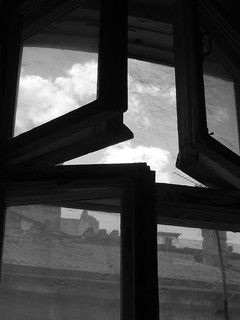
2. Skinamarink (2022)
Who says experimental films can’t be profoundly terrifying? “Skinamarink” shattered preconceptions and carved out a unique space in the horror landscape, baffling some viewers while utterly terrifying many others. This film’s distinct aesthetic and narrative approach secured it a high position in “The Science of Scare” study, boasting a total score of 91, with an average heart rate of 84 bpm and spikes hitting 113 bpm. These numbers attest to its potent, if unconventional, scare factor.
Director Kyle Edward Ball makes a bold choice by presenting the film largely from the disoriented point of view of two young children, Kevin and Kaylee. Their world turns upside down after their father mysteriously disappears, and bizarre, inexplicable occurrences begin to plague their family home. Doors, windows, and even toilets vanish, plunging the children into a nightmarish domestic void that is as disorienting for the audience as it is for its young protagonists.
“Skinamarink’s” terror isn’t reliant on jump scares or explicit gore; instead, it’s a masterclass in atmospheric horror and psychological unease. It preys on childhood fears of abandonment, the unknown, and the subtle warping of familiar surroundings. The low-light, grainy visuals, reminiscent of old home movies, create a suffocating sense of isolation and dread, making the sparse, unsettling events resonate deeply.
Many viewers expressed confusion about the precise plot, yet this ambiguity is precisely what makes “Skinamarink” so effective. The film taps into a primal, almost dreamlike fear, leaving much to the viewer’s imagination, which often conjures far more disturbing scenarios than anything explicitly shown. Its success proves that truly innovative, experimental horror can bypass traditional narrative structures to deliver a profoundly unsettling experience that sticks with you long after the credits roll.
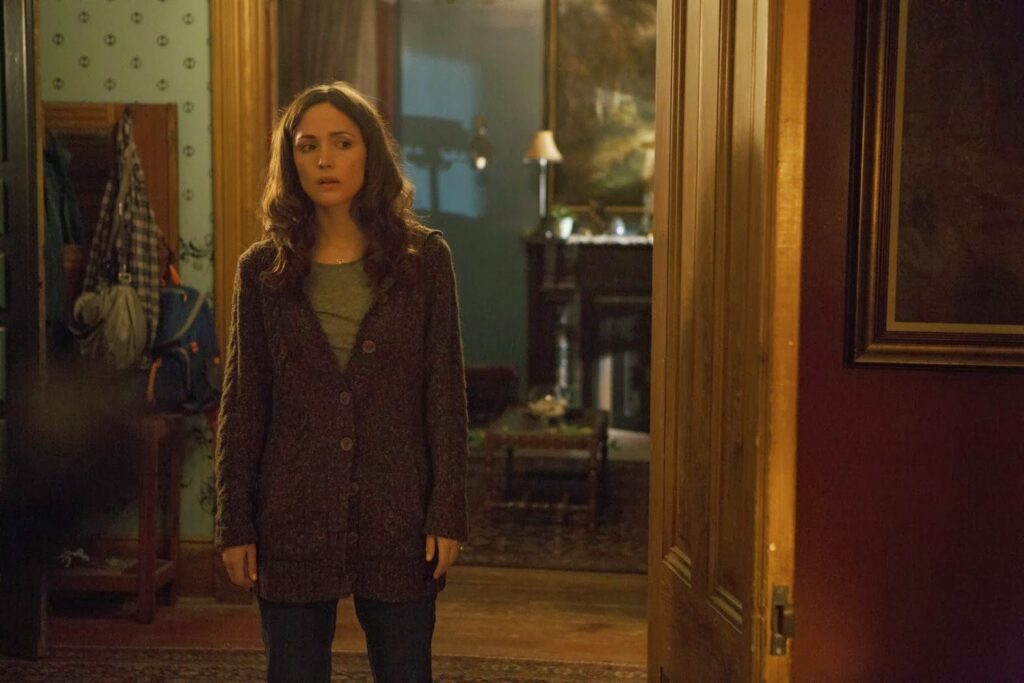
3. Insidious (2010)
Before launching one of the most successful horror franchises of the modern era, James Wan, alongside frequent collaborator Leigh Whannell, delivered “Insidious,” a film that quickly established itself as a masterclass in supernatural terror. Although newer offerings might have nudged it from its original scientific podium spot, it still ranks impressively at fourth on “The Science of Scare” list with a score of 90. Its average heart rate of 85 bpm and a staggering highest spike of 133 bpm are a testament to its enduring power to make hearts race.
“Insidious” follows Josh and Renai, a couple whose lives are plunged into paranormal chaos after their son, Dalton, mysteriously falls into a coma shortly after they move into a new house. The film’s brilliance lies in its fusion of classic film tension, a compelling mystery, and genuinely unsettling paranormal activity. Wan, as a horror expert, meticulously crafts a narrative that not only provides intense frights but also builds a rich, albeit disturbing, mythology that would spawn multiple successful installments.
Wan himself stated that “Insidious” was intended as a “corrective to the outright violence of Saw,” pushing him to craft something on a more spiritual, psychological level. This intention is palpable throughout the film, which prioritizes atmospheric dread and suspense over gratuitous gore. The result is an incredibly effective chiller that relies on its eerie premise and disturbing entities to create a palpable sense of fear.
It’s frequently lauded for featuring “one of the best jump scares ever put on screen,” a moment that highlights Wan’s expert timing and understanding of audience psychology. The film doesn’t just startle; it creates an entire dimension of spiritual malevolence known as ‘The Further,’ allowing for a more profound and sustained sense of terror. Its combination of groundbreaking mythology, intense scares, and directorial finesse cements “Insidious” as a cornerstone of modern horror and a scientifically proven fright-fest.
Read more about: The Silent Drain: 11 Luxury Sedans Whose Resale Value Vanished Overnight
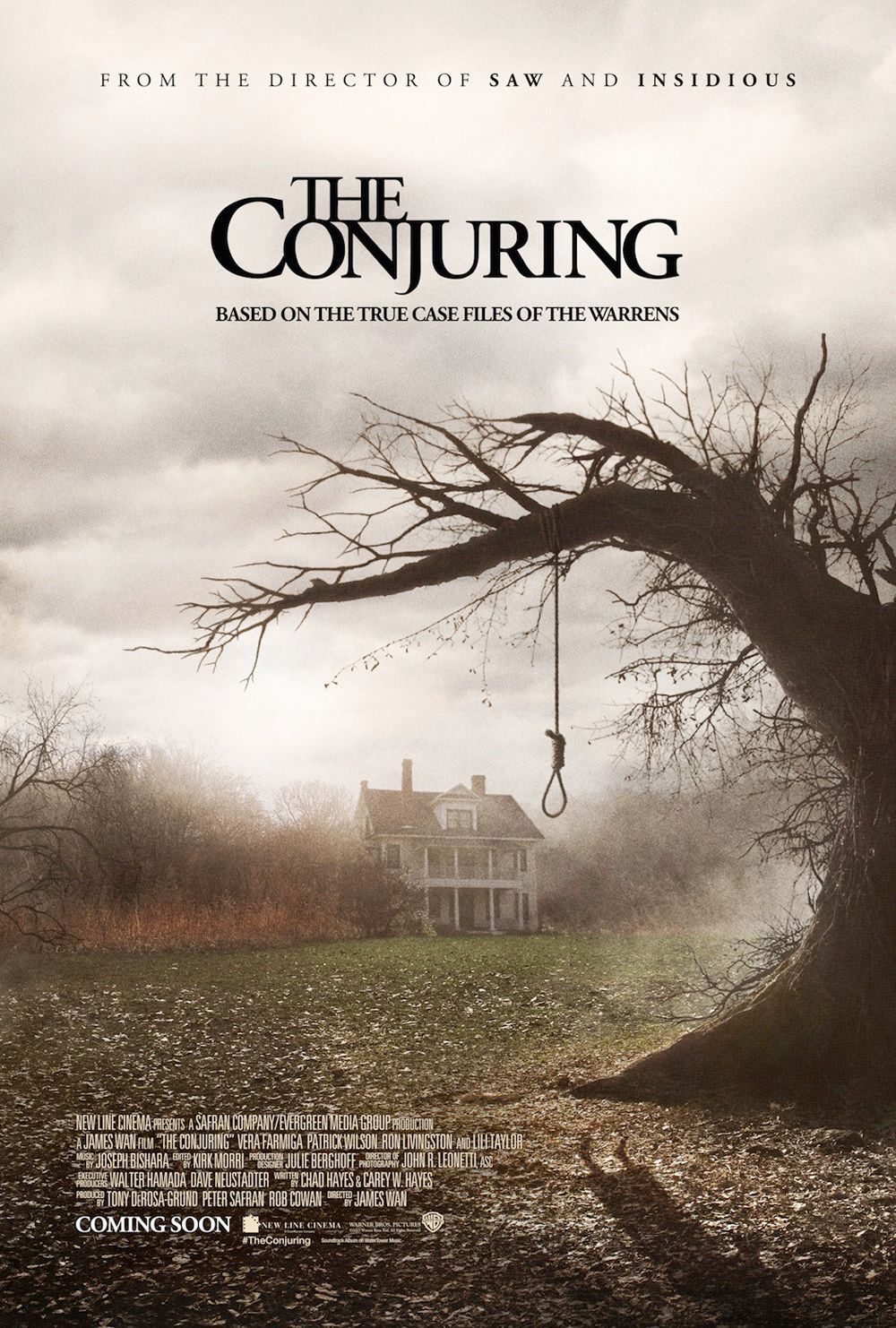
4. The Conjuring (2013)
James Wan’s prowess in the horror genre is undeniable, and “The Conjuring” stands as a monumental achievement, solidifying his place as a modern master of fear. This film, which also appeared high on both the Rotten Tomatoes user poll (3rd) and the “15 Scariest Movies Of All Time” list (3rd), clinched the fifth spot in “The Science of Scare” study with a score of 88. Its ability to generate widespread terror is evident in the study’s findings: an average heart rate of 84 bpm, peaking at an intense 132 bpm during its most frightening moments.
Based loosely on the real-life paranormal investigations of Ed and Lorraine Warren, portrayed with grounded world-weariness by Patrick Wilson and Vera Farmiga, “The Conjuring” masterfully breathes fresh terror into familiar genre tropes. Set in the 1970s, the film follows the Warrens as they confront a malevolent entity tearing apart the Perron family in their secluded New England farmhouse. This “inspired-by-true-events” premise lends an extra layer of chilling authenticity to the proceedings.
What makes “The Conjuring” particularly effective is its subtlety and its deliberate build-up of atmosphere. While it delivers effective jump scares, Wan’s true genius here is in allowing the horror to slowly permeate the environment. The film meticulously builds dread as the Warrens come to terms with the demon’s true nature, battling not just the entity but also the Catholic Church for permission to perform an exorcism. This creates a relentless, tense ride that is both physically and psychologically exhausting for the audience.
The film’s impact was so profound that it even reportedly “bled into the real world, with bizarre things happening on the set.” This eerie echo of its subject matter only enhances its legacy. “The Conjuring” not only revitalized the haunted house subgenre but also launched a sprawling cinematic universe, proving that a well-crafted, character-driven approach to supernatural horror can deliver scares that are both deeply unsettling and commercially successful.
Read more about: Unveiling Cinematic Terror: Top Scary Movies That Leave Audiences Breathless
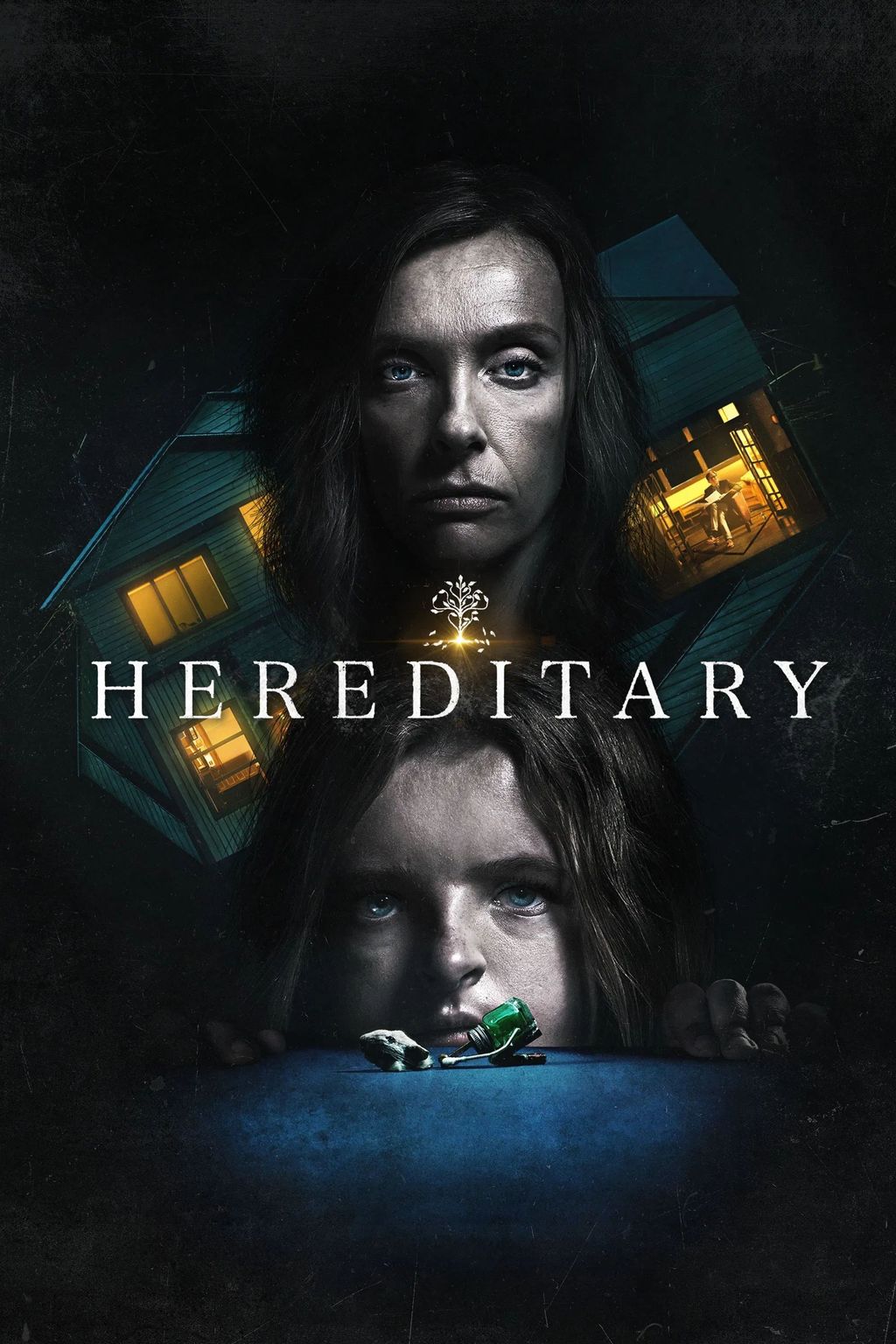
5. Hereditary (2018)
Ari Aster made an indelible mark on contemporary horror with his feature directorial debut, “Hereditary,” a film that critics and audiences alike found profoundly disturbing. Ranked 6th in “The Science of Scare” study with a score of 81 (AHR of 82 bpm, peaking at 104 bpm), it also secured high spots in the Rotten Tomatoes poll (2nd) and the “15 Scariest Movies Of All Time” list (2nd). This widespread recognition underscores its unique, unsettling power.
“Hereditary” is no ordinary ghost story; it’s a dark family drama cloaked within supernatural horror, exploring the insidious nature of grief and trauma. The film doesn’t waste time in turning disturbing, flooring audiences “not long into its runtime with a brutal decapitation sequence that ranks among the scariest horror movie scenes of all time.” This shocking early moment sets the tone for the terrifying depths the narrative will plunge.
Starring Toni Collette in a performance that many critics believed deserved an Oscar nomination, the film meticulously unravels a tale of grief, possession, and conspiracy. The grieving Graham family, desperate to communicate with their recently deceased matriarch, unwittingly opens a door to something far more sinister. The slow, deliberate unveiling of cryptic and increasingly terrifying secrets about their ancestry creates a suffocating sense of inescapable dread.
Aster masterfully blends psychological terror with occult horror, crafting a story that is not only frightening but also a deep exploration of the devastating effects of trauma, particularly when accompanying a child’s death. It’s a tough watch on multiple levels, making it one of the most critically acclaimed and viscerally unsettling films of the decade. “Hereditary” proves that horror can be both intellectually complex and profoundly, disturbingly scary.
Read more about: Prepare for Tears: 13 Movie Endings So Raw and Emotional, Directors Dared Not Cut Away
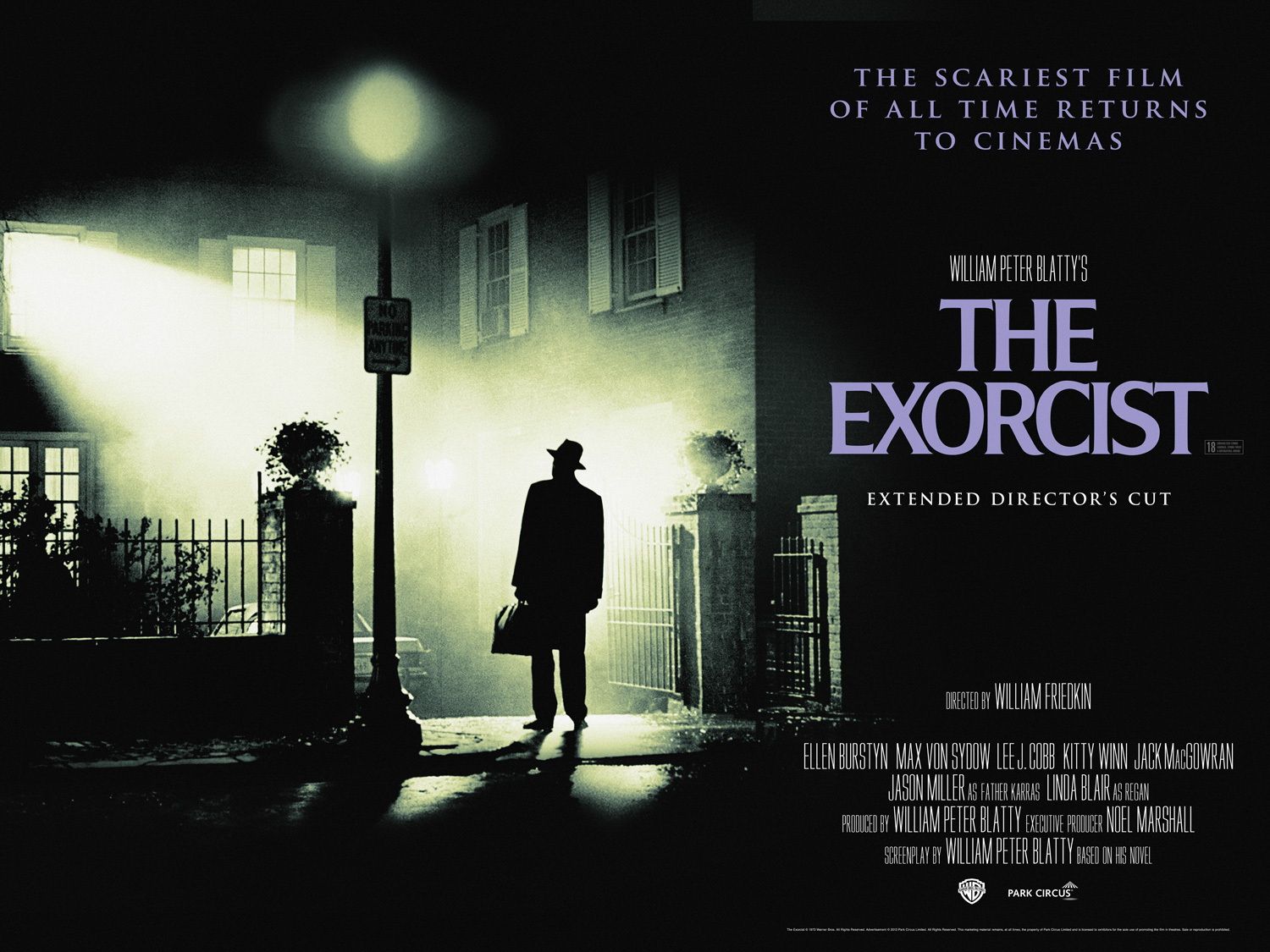
6. The Exorcist (1973)
This is the grand dame of horror, the film that shattered expectations and redefined what a scary movie could be. William Friedkin’s adaptation of the eponymous novel, chronicling a demon-possessed child and the desperate attempts to banish the entity, wasn’t just a cinematic event; it was a cultural phenomenon. Topping the Rotten Tomatoes user poll with a staggering 19% of all votes and ranking #1 on the ’15 Scariest Movies Of All Time’ list, its impact is undeniable.
“The Exorcist” achieved massive critical and commercial success, becoming the highest-grossing R-rated horror film ever at the time and the first to be nominated for Best Picture at the Oscars. Yet, its true legacy lies in the mass hysteria it unleashed across the country, prompting protests over its controversial subject matter and widespread reports of nausea and fainting among audiences. This wasn’t merely a film; it was an experience that pushed the boundaries of public comfort and cinematic realism.
While its dramatic pacing and some effects might appear quaint by today’s hyper-realistic standards, the raw, visceral power of “The Exorcist” remains undiminished. It taps into profound theological fears, the terror of losing control over one’s body and soul, and the sheer desperation of a mother fighting for her child. The film’s ability to unsettle and provoke deep-seated anxieties ensures its continued reign as a benchmark of cinematic terror, still terrifying first-time viewers decades later.
Read more about: Beyond Horror: An In-Depth Look at Stephen King’s Unexpected Top 10 Films of All Time
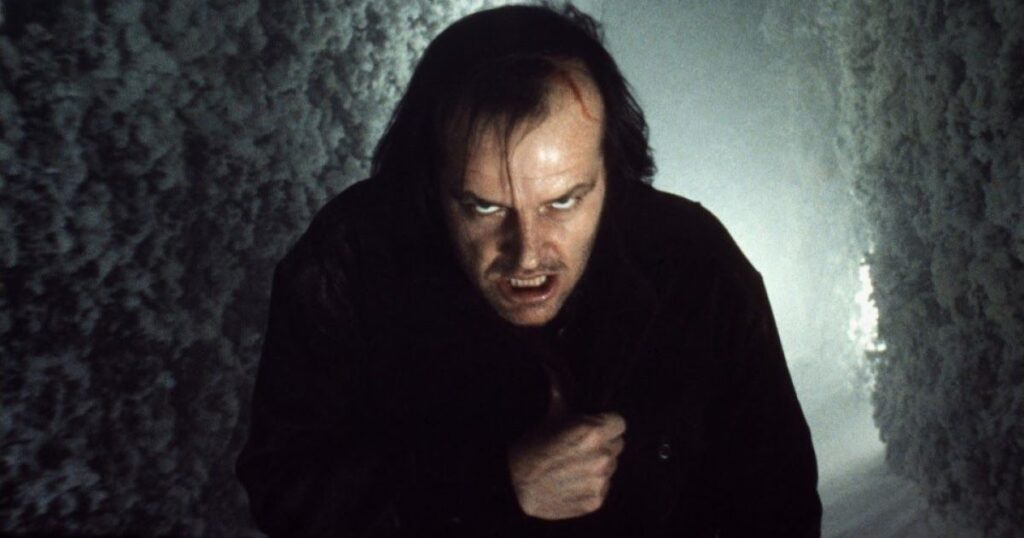
7. The Shining (1980)
When it comes to adapting Stephen King, many have tried, but few have achieved the iconic status of Stanley Kubrick’s “The Shining.” This film isn’t just a horror classic; it’s a masterclass in psychological dread, a genuinely unnerving take on the traditional haunted house story that eschews overt jump scares for a slow, agonizing crawl under the viewer’s skin. It clinched the fourth spot in the Rotten Tomatoes user poll, a testament to its enduring fright factor.
Kubrick’s meticulous direction, combined with an unparalleled marvel of set and production design, creates an atmosphere of suffocating isolation within the grand, labyrinthine Overlook Hotel. Jack Nicholson’s legendary performance as Jack Torrance, charting his terrifying descent into madness, is both chilling and magnetic, complemented by a host of memorable, unsettling images that have seeped into the pop culture lexicon.
The film’s genius lies in its ability to make the audience experience Jack’s unraveling alongside him, blurring the lines between supernatural menace and profound psychological breakdown. It champions an internal, character-driven horror that resonates far more deeply than transient shocks. “The Shining” stands as a testament to the idea that true terror often originates not from external monsters, but from the darkness within, amplified by an oppressive, desolate setting.
Read more about: Know the Legends? These 14 Scream Queens Were the Terrifying Rulers of Horror Across the Decades!
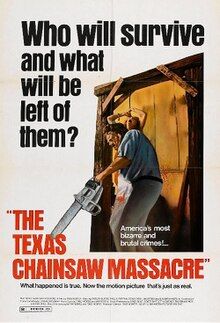
8. The Texas Chain Saw Massacre (1974)
Before Michael Myers stalked Haddonfield or Jason Voorhees terrorized Crystal Lake, there was Leatherface, and he cut a truly terrifying path into cinematic history. Tobe Hooper’s low-budget slasher “The Texas Chain Saw Massacre,” very loosely inspired by the grim crimes of Ed Gein, carved its own indelible place in the horror genre. It grabbed the fifth spot in the Rotten Tomatoes user poll and also ranks highly on the general “15 Scariest Movies Of All Time” list, cementing its status as a genre foundational text.
What made this film so profoundly disturbing upon its release, and still effective today, was its grimy, almost documentary-like aesthetic. This choice lent an unsettling air of authenticity, making the brutal, over-the-top, power tool-inspired terror feel horrifyingly real, provoking the chilling thought, “This could actually happen, you guys!” It was a visceral, unflinching dive into depravity that few films had dared to explore with such raw intensity.
The massive, menacing presence of Gunnar Hansen’s Leatherface became an instant horror icon, a silent, masked brute whose terror was amplified by his deranged family. The film’s unrelenting atmosphere of decay and depravity redefined the slasher subgenre, influencing generations of filmmakers. Despite numerous attempts to revive the franchise, none have matched the original’s sheer, gut-punching impact and its unsettling legacy in horror cinema.
Read more about: Know the Legends? These 14 Scream Queens Were the Terrifying Rulers of Horror Across the Decades!
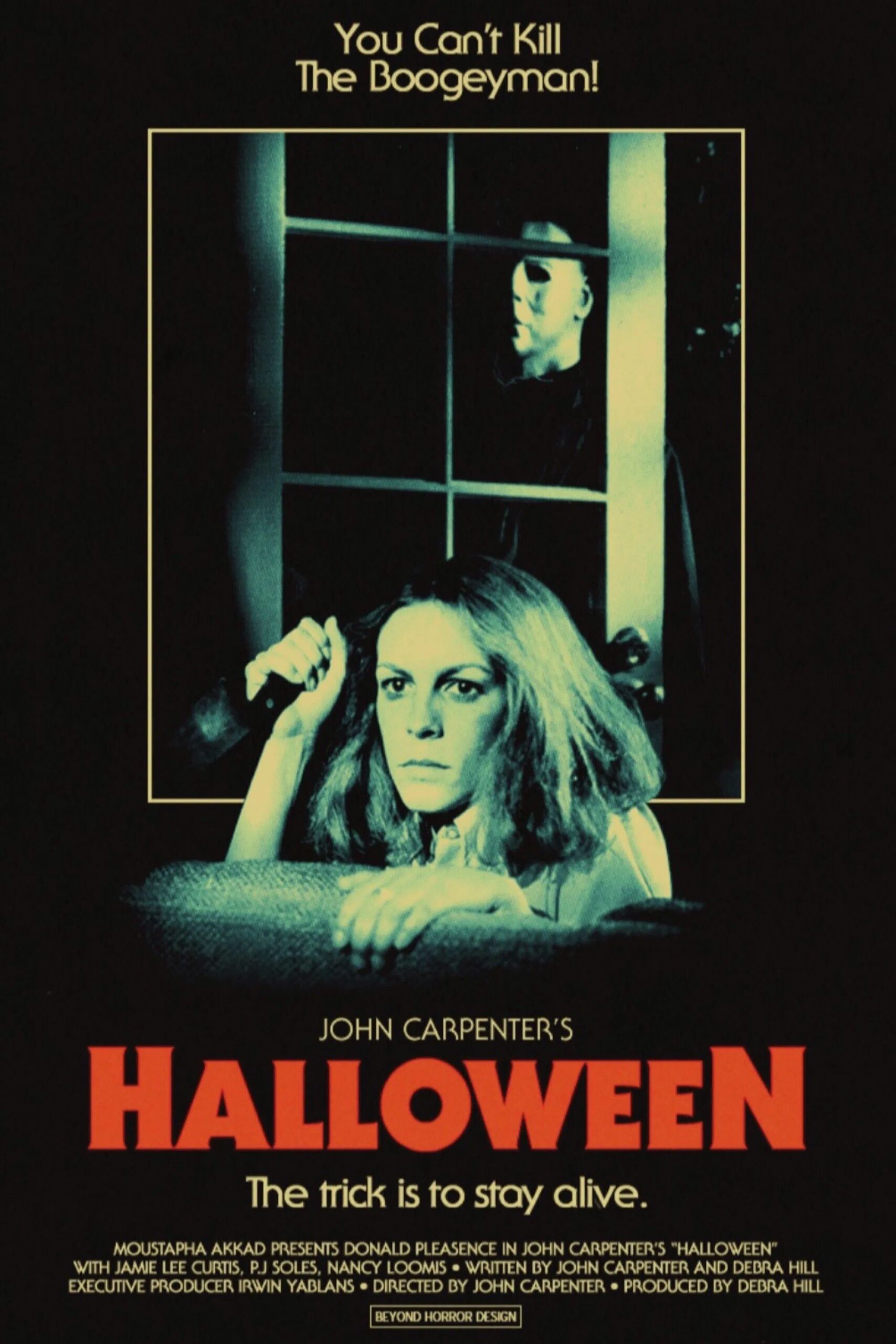
9. Halloween (1978)
John Carpenter’s “Halloween” isn’t just a film; it’s the genesis of the modern slasher, the movie that introduced the world to the “final girl” trope and gave us Michael Myers, a figure whose iconic mask and relentless pursuit became the stuff of legend. This seminal work secured the seventh spot on the Rotten Tomatoes user poll, a clear indicator of its colossal influence and enduring power to terrify.
Released on a shoestring budget, “Halloween” proves that meticulously crafted tension and inventive thrills can easily outweigh gratuitous gore. Carpenter masterfully builds suspense, using minimal jump scares but maximizing the psychological impact of Michael Myers’ silent, unstoppable presence. The film’s brilliance lies in its simplicity: a pure evil stalking ordinary teenagers on a seemingly ordinary night, transforming familiar suburban streets into a landscape of unimaginable dread.
The film also launched the career of the legendary “scream queen” Jamie Lee Curtis as Laurie Strode, a character who would become synonymous with resilience in the face of terror. The legacy of “Halloween” is truly untouchable; its tropes are now ingrained in the horror lexicon, and the franchise continues to thrive more than 40 years later. It’s a testament to Carpenter’s genius for creating a horror blueprint that remains terrifyingly effective and endlessly imitated.
Read more about: Know the Legends? These 14 Scream Queens Were the Terrifying Rulers of Horror Across the Decades!

10. The Ring (2002)
Successfully translating a foreign horror concept for a Western audience is a tricky endeavor, but Gore Verbinski’s “The Ring” achieved it with chilling precision. This remake of Hideo Nakata’s acclaimed Japanese thriller, “Ringu,” took the unsettling premise of a cursed videotape and amplified its visual terror, introducing millions to the potent, atmospheric dread of East Asian horror. It earned the sixth spot on the Rotten Tomatoes user poll and also appeared on the “15 Scariest Movies Of All Time” list.
The film masterfully retained the original’s striking visual imagery, most notably the spectral figure of a young girl with long black hair obscuring her face, crawling from a well and stumbling towards the camera. These grainy, nightmarish shots have deservedly become some of the most eerie and iconic in horror cinema. Naomi Watts delivers a committed performance as Rachel Keller, a journalist racing against a seven-day deadline to unravel the mystery behind the tape before it claims her life.
Set against the moody, perpetually overcast backdrop of Seattle, the film is drenched in an atmospheric blanket that perfectly fosters a sense of unease. “The Ring” is a rare example of a remake that not only holds its own against its influential predecessor but also carved out its unique place in popular culture, proving that a well-executed concept, universal primal fears, and unforgettable visuals can transcend cultural barriers to deliver truly effective scares.
Read more about: From Austrian Oak to Global Statesman: An In-Depth Chronicle of Arnold Schwarzenegger’s Enduring Legacy
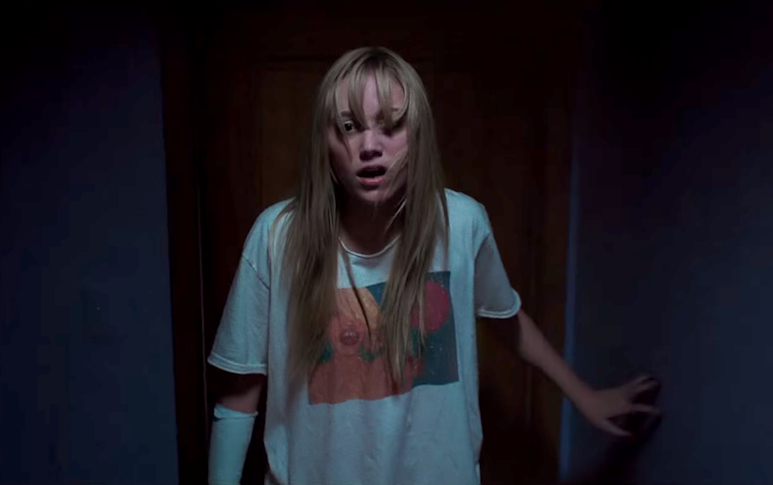
11. It Follows (2014)
David Robert Mitchell’s “It Follows” tapped into one of our most primal fears – being relentlessly pursued – and then compounded it with a deeply unsettling, intimate invasion of privacy. This modern horror gem, appearing at #12 on “The Science of Scare” list and #14 on the “15 Scariest Movies Of All Time” ranking, distinguished itself with a unique premise: a supernatural entity that spreads through ual contact, relentlessly stalking its victims unless they pass the curse to someone else.
The film stars Maika Monroe as Jay Height, whose night of intimacy unexpectedly transforms into a nightmarish ordeal. What makes “It Follows” so viscerally unpleasant is the entity’s ability to assume the form of anyone – from a complete stranger to a beloved family member – slowly approaching its target. This creates a pervasive sense of paranoia and vulnerability, as the threat could literally be anyone, at any time, slowly closing in.
Mitchell’s direction is a masterclass in building dread through slow, deliberate pacing and widescreen cinematography that often reveals the approaching entity in the background, a chilling game of ‘I Spy’ with death. The film cleverly explores themes of ual anxiety and consequence without being preachy, grounding its supernatural terror in a relatable human experience. “It Follows” is a standout for its innovative approach to classic horror tropes, delivering a uniquely discomforting and unforgettable fright.
Read more about: These 18 Horror Films Land on Rotten Tomatoes’ List of the Greatest Ever

12. The Blair Witch Project (1999)
By the close of the millennium, the horror genre seemed to have exhausted its bag of tricks, struggling to find a fresh take. Then came “The Blair Witch Project,” a film that didn’t just break the mold; it shattered it, reinventing the “found footage” subgenre and taking cinemas by storm. Appearing at #6 on the “15 Scariest Movies Of All Time” list, its guerrilla-style filmmaking and brilliant marketing campaign created a genuine cultural phenomenon.
Initially marketed as actual surviving footage from three film students who mysteriously vanished while investigating the Blair Witch in Maryland, the film’s raw, shaky-cam aesthetic made the on-screen events feel terrifyingly real. Audiences genuinely believed they were witnessing evidence of a real disappearance, thanks to a marketing push that blurred the lines between fiction and reality, fostering a truly unprecedented level of immersion and fear.
Produced on a shoestring budget, the film’s success was monumental, becoming one of the highest-grossing films of its year and sparking countless imitations. However, none of the “found footage” copycats managed to replicate the jaw-dropping impact and spine-tingling realism of the original. “The Blair Witch Project” proves that true horror can emerge from the unseen, the unknown, and the terrifying power of suggestion, leaving audiences to fill in the blanks with their darkest imaginings. It remains a watershed moment in horror, forever changing how we perceive cinematic terror.
Read more about: Remember Them? 10 Iconic Actors Who Crushed One Role Then Ghosted Hollywood For Good!
From the visceral, physiological frights measured by science to the enduring, cultural impact of genre-defining classics, the landscape of horror cinema is rich with films that have carved out their own terrifying legacies. Whether they provoke heart-stopping spikes in our BPM or burrow deep into our psyche with psychological dread, these cinematic masterpieces continue to remind us of our primal fascination with fear. The quest for the “scariest movie ever” may remain a delightfully subjective and ever-evolving debate, but one thing is certain: the thrill of the chill, the rush of adrenaline, and the shared experience of terror will keep us coming back for more, eagerly anticipating the next film to drain the blood from our faces and leave us breathless in the dark.



